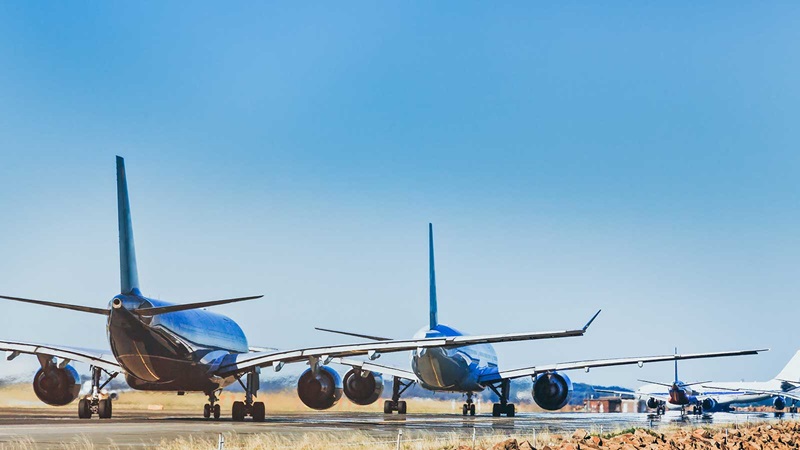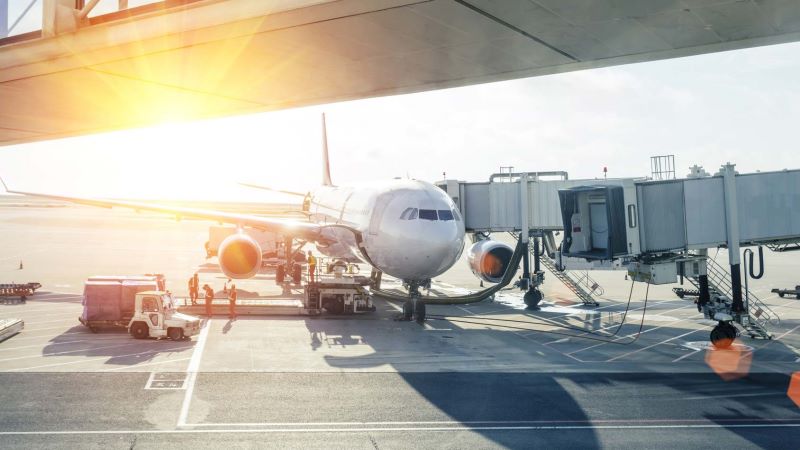Securing the future of UK aviation
It’s unquestionable that the UK aviation sector is entering into a complicated and challenging era; pressures relating to environmental standards, passenger expectations, expansion needs and market competition remain, but now with the added complexity and uncertainty of Brexit.
To maintain the UK’s reputation as a world-leader in aviation, a review of the situation the industry faces is required. In this article, Carl Dainter, Head of Aviation Consultancy, shares his thoughts on what’s needed.
The current Airports National Policy Statement has been an effective guiding tool for the sector, but we must now look further to the future in order to plan for a world-class aviation sector. Positively, the Department for Transport (DfT) is also on board with this concept, having recently run a consultation on its ‘Aviation 2050’ green paper.
We responded to the consultation, offering our thoughts on what’s needed to ensure a fit-for purpose UK aviation sector. Chief among our recommendations was a need for a collaborative and holistic approach to planning; one which draws on ideas from across the whole industry, as well as from outside, to tackle prominent challenges like connectivity, innovation, the skills gap and passenger experience.
A multifaceted and collaborative approach
Collaboration is essential to securing the long-term future of the UK’s aviation sector. It’s right that DfT leads the discussion, but it must draw on the insight of others, such as the National Infrastructure Commission and the Infrastructure and Projects Authority, the industry, interest groups, airlines, airports and members of the public in order to achieve success.
And all of these people must consider the bigger picture. Economic considerations, while absolutely vital, are only part of the challenge. Managing environmental and sustainability risks, supporting communities living near to airports, and ensuring supporting infrastructure is built to the same high standard all need to be considered as part of a holistic review.
A failure to address these points puts at risk government’s ambitions of achieving a safe, secure and sustainable aviation sector that meets the needs of consumers, and ensuring Britain remains global, modern and outward-looking, with an aviation sector infrastructure fit for the challenges to be faced in the coming decades.
Building a global and connected Britain
As the UK continues to seek global export growth, the importance of a flight network that facilitates cargo delivery cannot be underestimated. Similarly, and just as importantly, better global connectivity enables customers to come to the UK for trade and leisure purposes and also connect through hubs en route to other destinations.
The UK has the largest aviation network in Europe and we must ensure that accessibility at major ports of entry is flexible and enables people to be drawn from diverse geographies. Aside from the necessary policy amendments required to drive improvements, airports must be built with the technology required to facilitate this, as well as the right spaces to cope with a faster flowing passenger footfall. Widening the access of eGates to more countries is a perfect example of this.
As one of the Programme Client Partners for Heathrow’s expansion, we see first-hand how important the UK’s connectivity is for trade. We see the need for greater airport capacity in the South East and the opportunities that a third runway will bring, including skills development, employment generation, creating infrastructure delivery capability and enhancing the UK’s global reputation. Heathrow’s expansion is paramount for the UK’s aviation success.
Support regional growth and connectivity
Although not the focus of the consultation, surface access provision should not be overlooked. The need for sound transport infrastructure that enables people (both staff and passengers) to get to airports is just as important as on-site travel. It’s something that must be considered if the UK is to progress with an aviation strategy that considers the needs of regions and offers a seamless passenger experience.
Positively, the UK aviation industry is already working hard to support regional growth. For instance, Heathrow’s innovative use of Logistics Hubs – which is integral to ensuring every corner of the UK benefits from the expansion of Heathrow – is helping to spread job creation and economic benefits up and down the country. The model could and should be rolled out at other airports in the country to ensure a spread of economic gain. Indeed, there is already consideration for how to use the Logistics Hub infrastructure for major development programmes once the initial benefits have been derived by Heathrow. It’s a demonstration of how best practice in delivering a sustainable aviation sector can benefit other sectors and regional geographies.
In addition to imbedding initiatives which stimulate both local and regional growth, the aviation industry must also help drive the debate. For instance, the Heathrow Skills Taskforce has been instrumental in helping the airport identify and address challenges such as youth unemployment and bridging the skills gap. The insight that industry leaders bring to the skills challenge is invaluable and DfT must seek to unlock the wealth of knowledge as it develops this aspect of is aviation strategy.
Encourage innovation and new technology
The aviation sector is one of the most innovative sectors in the world. From the use of cutting edge materials in aircraft, to technology that enables mobile connections at 40,000 feet, the scope is huge. It’s important, however, that the sector doesn’t lose sight of other pertinent issues, such as equality, diversity, security, safety and environmental sustainability.
A great example of inclusive innovation is Building Information Modelling (BIM). It’s a growing offering in the aviation sector, with benefits across all development and operational phases. We’re also seeing the Design for Manufacturing and Assembly (DfMA) agenda coming to the fore on major projects. This is due to the very real benefits in terms of cost, time and quality. Importantly, all of this innovation can, and is, generating benefits for local communities and airport end users.
Continued innovation is key to a modern and fit-for-purpose UK aviation industry. It’s essential that DfT fully embraces innovative ideas from within the aviation industry and from outside.
Looking ahead
There’s no doubt DfT has an incredibly complex challenge on its hands, but seeking the views from a cross-section of industry and wider society is an eminently sensible step in creating a meaningful and practical White Paper. The aviation team at Mace looks forward to continuing to use our position as an industry thought-leader to help government shape the future of the UK’s aviation strategy.
















